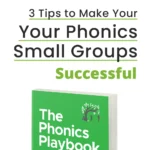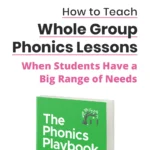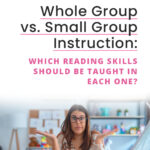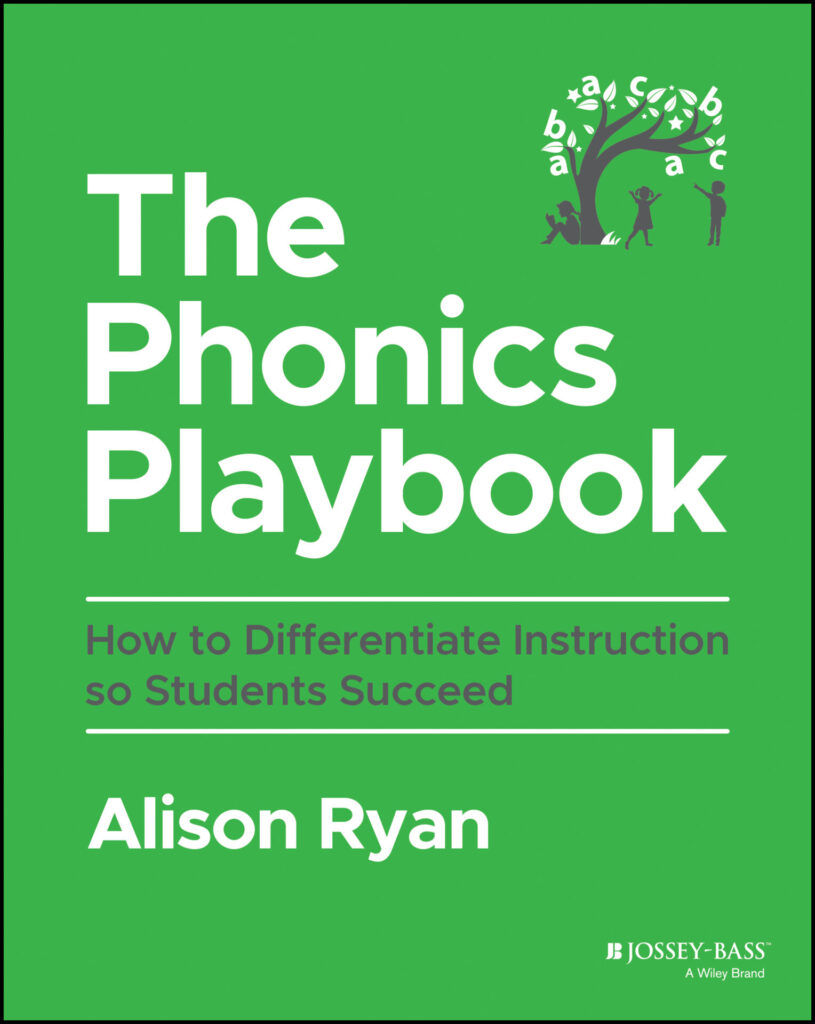Phonics instruction is a critical component of early literacy, enabling students to decode words and develop reading fluency. Integrating phonics into your reading small groups can be both effective and manageable with the right strategies.
There are various ways to meet your students’ phonics instruction needs. In my book, The Phonics Playbook, I go over in detail 3 effective models for helping you differentiate your phonics instruction. (You can also read a bit more about the first two models in the blogs “3 Tips to Make Your Phonics Small Groups Successful” and “How to Teach Whole Group Phonics Lessons When Students Have a Big Range of Needs.”)
For this particular blog post, I’m going to focus on the third model: phonics as part of reading-focused small groups. Let’s dive into some specific strategies to help you do that!
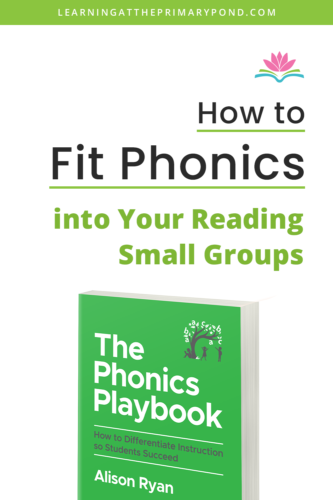
Which Students Should Use This Model?
Before we get into how this model would actually work, let’s first talk about who should use this model. Because the teacher devotes more time to reading and comprehending with this model, less time is spent on out-of-context phonics activities like reading individual words.
Therefore, this approach of using phonics as part of reading-focused small groups is only recommended for use with students who have already achieved a high level of mastery of the essential phonics skills typically included in a K-2 scope and sequence.
Students at this stage are reading fluently. They still need some instruction on how to break down and decode multisyllabic words. Typically, these students can read more challenging words than they can spell. For example, they might be able to decode three/four-syllable words, but they still misspell certain words with vowel teams.
Although this model is designed for students who have mastered K-2 phonics skills, this does not necessarily mean that this model is only for third grade and up. Students might be ready for this model in late second grade or maybe not until fourth grade. It depends more on where they land in the K-2 phonics scope and sequence than what grade they’re in.
Example Schedules for Phonics Instruction within Reading Small Groups
Here is a break down minute by minute, day by day of how you could integrate phonics into your reading small groups:
Reading Focused Small Group Schedule (Daily)
- Introduce new text (1-2 minutes)
- Read new text (8-9 minutes)
- Retell and discuss text, i.e. comprehension (5-6 minutes) **If more in-depth comprehension work is desired, the text reading time can be slightly shortened and this comprehension time can be lengthened.
- Decoding instruction (4-5 minutes) **This can also be placed before the text introduction.
Spelling Small Group Schedule with Differentiation (Once Per Week)
- Introduce spelling pattern and teach rule if applicable; have students decode several words with the pattern (3-4 minutes)
- Dictate one word at a time for students to spell on whiteboards, making sure to discuss each word’s meaning (10-12 minutes)
- Give students a list of words to practice independently; chorally read all words (3-4 minutes)
Putting it All Together
Here’s an example weekly schedule of how those components outlined above could fit together:

There are of course variations of this example! In the above example schedule, there are 4 reading groups. This teacher has one day designated for spelling instruction, four days focused on decoding and comprehension, and Friday has extra time built in for spelling assessment via dictation.
In this particular example, the teacher sees Reading Group 1 five times per week, Reading Groups 2 and 3 four times per week, and Reading Group 4 only twice per week. There are only three spelling groups (rather than four) to make differentiation easier to implement.
Again, this schedule is only an example and might not match your students’ needs or exact available schedule, so feel free to adjust as you see fit! For instance, you might not have an extra 20-30 minutes on Fridays for differentiated dictation, so you choose to cut down on your reading group time accordingly.
Here’s a variation where decoding instruction is still integrated into your reading groups (as outlined in the Reading Focused Small Group Schedule above), but you teach spelling in a whole group setting:
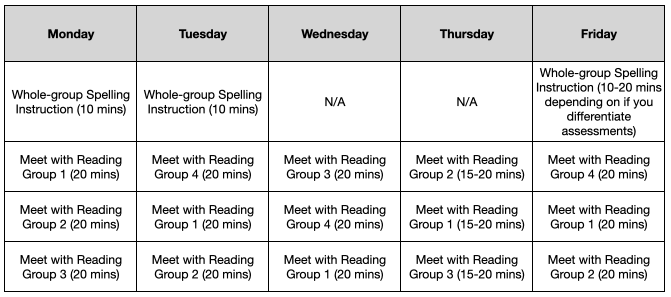
Strengths and Limitations of This Model
As students move beyond K-2 phonics skills, our instructional focus should shift. This model enables teachers to increase their focus on reading comprehension, yet still make time for differentiated decoding and encoding instruction. There is a lot of flexibility within this model!
Of course, like with all models, there are some drawbacks. It can be difficult to implement this model if you have a handful of students who are working on K-2 phonics skills while the rest of your class is made up of fluent readers. Many times, the schedules outlined above will not provide enough phonics instruction time for these students, so additional intervention time is necessary.
Another potential trouble spot is the amount of time that students are expected to work independently in this model. Procedures and expectations must be carefully taught so that this time is productive. If you find that students are not working productively or staying on task, consider shortening your small-group time and / or breaking up independent work time. For example, you might see two small groups, have the entire class go out to recess or take a movement break, and then return to meet with an additional small group.
Conclusion
There’s a lot to think about and consider when it comes to making your phonics instruction successful. By implementing some of the strategies above, you can create inclusive and effective phonics instruction that supports all learners in developing essential literacy skills. Remember, the ultimate goal is to empower every student to become confident and proficient readers and writers, regardless of their starting point!
Want to dig into this topic in more detail? The Phonics Playbook is packed with research-backed differentiation strategies for K-3 teachers! This guide will help differentiate your phonics instruction so that ALL students succeed! Grab your copy here!
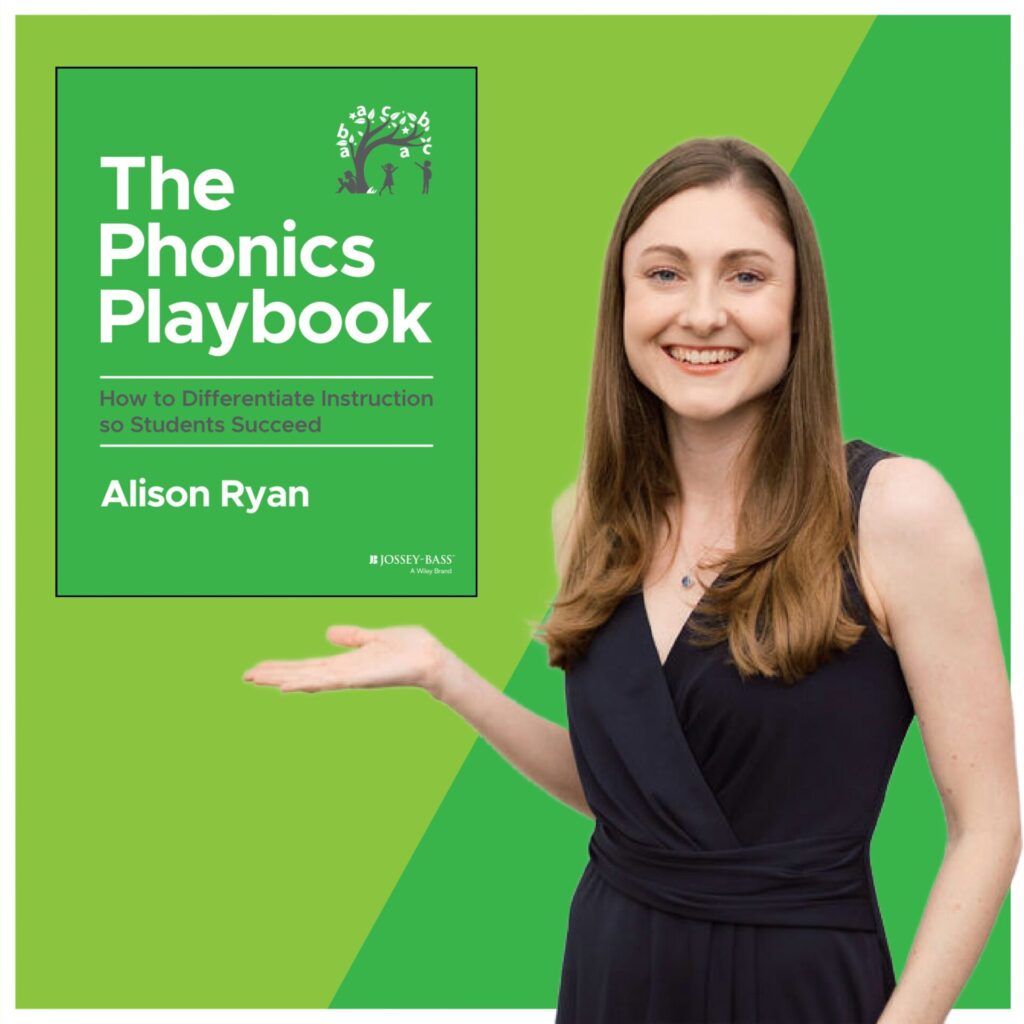
Happy teaching!

